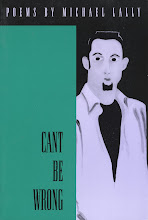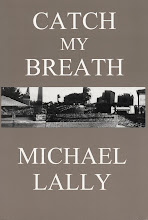I always thought I’d seen this movie, the 1935, black-and-white, Oscar winning one with Clark Gable, Charles Laughton and Franchot Tone.
Maybe I did on TV when I was a kid, but I think it’s more likely I saw clips from it so often I thought I’d seen it. But watching it all the way through the other night on TCM, there was a lot I didn’t remember ever seeing before, including shots that helped me finally get how Gable became “The King.”
That label may have originally been meant to convey his being “the King of the Box Office,” but it stuck, even when others eclipsed him and far outdid him in terms of Hollywood money.
Just like Elvis (no matter how “racist” the elevation of him might have seemed above the other founders of rock’n’roll, Chuck Berry, Little Richard, Fats Domino and Bo Diddley) Gable’s box office success wasn’t the only reason for his crowning.
If you only know Elvis from the Las Vegas years, or even the later Hollywood years, it’s hard to understand. The same with Gable. If you only know him from later movies, even GONE WITH THE WIND, you’ll miss the point. You have to see both these guys in their youthful glory to get it.
Gable may have looked a little goofy in some of his earlier roles, and his voice didn’t help, as uniquely iconic as it is, it’s also grating and not very seductive sounding. But what MUTINY ON THE BOUNTY showed me for the first time, is that he was beautiful, just like Elvis, in a way rare for a man.
Sexy, hunky—at least in terms of their time—and obviously talented, it was the charisma of their image, their sexy masculinity that at times was simply beautiful.
There’s a couple of scenes in MUTINY ON THE BOUNTY when Gable is silent and the camera lingers on his face or his full physical presence and you get it. Without that edgy sounding voice of his, you suddenly see a young man who was, at least through the movie camera, stunning.
One of these scenes is a shot of him and Franchot Tone reclining on the sand watching their Tahitian lovers (also beautiful screen presences—Movito and Mamo Clark—as was Tone, but none of them burned through the camera lens like Gable did). Gable has his feet pulled up and his knees to the side with nothing on but a makeshift bathing suit as he stares at the women and the camera stares at him and it reminded me of nothing so much as similar shots of Marilyn Monroe!
I don’t mean he comes across androgynous or feminine, though all of these four beauties, the men and the women, look pleasingly softer than the typically toned up, knotted muscled, often steroided out, bodies I see too often in movies today.
[An extended aside: I’m impressed with the discipline of stars physical workouts and all, and used to know Lisa Lyons, I think her name was, who was one of the first famous female body builders and was certainly very attractive and sexy in person, and her muscle shots were fascinating and in Robert Maplethorpe’s photos even artistic, not just the photos but her body, but as a man who loves women and can appreciate a beautiful man, I’m not attracted to bodies in which you can see their musculature through their skin as is so often the case these days, I don’t get the obsession with “six-pack abs,” that even my beautiful ten-year-old boy seems concerned with and he’s very thin, I find that kind of muscle definition popping out from under the skin not only distracting from the sensual and aesthetic pleasure of skin and body shapes but aesthetically and sensually a turn off, maybe it’s just my age, but I don’t dig looking at women whose bodies seem to be telegraphing “look at how hard I work out” and whose bellies instead of being soft and round like they were in the stars and pin ups of my youth look tight and hard and uninviting.]
I mean it’s one of those images—the shot of Gable sitting on his legs more or less on the beach—that transcends gender and race and all the other limitations to the old conceptions of beauty and just IS beautiful.
And let me make this clear too, I fell in love with both the actresses playing the Tahitian beauties, and I never found Gable that attractive, interesting as a movie icon and sometimes as an actor, as in the more widely known IT HAPPENED ONE NIGHT. His rugged individualism and wise guy ironic tone that often ended up getting him in trouble or looking like a fool, which his characters usually accepted graciously once the jig was up, I found charming and entertaining, but I didn’t know why women of his generation swooned over him, like my teenage sisters swooning over Sinatra or Nat King Cole or my contemporaries over Elvis or The Beatles (none of whom looked much different than Gable in a bathing suit, no “six packs” etc.).
Now I do. That beach scene, as well as several others, like the one with him and his Tahitian beauty as they kiss before he goes back to the ship after their first tryst, and other shots of him in full Naval regalia, except the hat, not speaking, just looking magnificent.
The other thing that was a discovery watching this movie all the way through was the acting and the story telling. It does have the usual melodramatic flourishes of its time here and there, but they’re very few and for the most part the acting is fantastic. Charles Laughton is his usual great self, his treatment of Captain Bligh’s character gives him much more complexity than the story line otherwise does, and much more than most Hollywood character actors of that time would have.
There’s a reason it’s a classic. If you’ve never seen it, check it out sometime, remembering it’s a product of its time and place, but then let the grace of its artistry work on you and I think you’ll be rewarded.
Subscribe to:
Post Comments (Atom)
















6 comments:
Yes, and the sadistic treatment of the sailors by Bligh--whose twisted inner workings are suggested artfully by Laughton's facial contortions--might be in intentional contrast to the soft sexuality of Gable, Tone and the Tahitians. Perhaps that's what the movie is about, this contrast of sexual styles. The death of the old, the birth of the new--for which the mutineers must relinquish everything. And it may be no accident that Gable's last role, in "The Misfits," was as a hardened cowboy named Gay (the implications of which would not have escaped Arthur Miller in 1960)who embraces Marilyn Monroe as if she were his younger self ... and would do anything other than work for "wages"(read:sin). That's enough from me, I'm hitting a meeting.
Nice post! I must confess that whenever I see "Mutiny on the Bounty" I'm so attentive watching Charlie Laughton (who hapened to be leaner than usual in the films he made in 1935), that I hardly have eyes for anyone else, but I agree with you that Gable looks very attractive there!
Apparently, he didn't like wearing breeches in the film, but they suit him fine, and one doesn't miss the famous moustache, either. In fact, I believe that he looks a lot better without the moustache (as in "Susan Lennox")
I'm with you in your reflection about muscles and beauty: back in 1935, a finely built man didn't look like the six-pack-and-epilated faux Spartans of "300"... didn't need to, in fact, and were far more beautiful like that (think of Johnny Weissmuller: isn't he much more goodloking than later Tarzan Gordon Scott?).
And then, I don't like workout aesthetics for another reason... these muscles are usually a fake: I work in a job which demands a good deal of physical strenghth, and none of the other guys working there sports the type of muscles that bodybuilders have... And I bet that any of them is as strong, if not more, than the most spectacular bodybuilder.
Off-Topic: about the line breaks in your profile, try putting
after a line
Amen for this post. I was watching the same time you were and thinking much the same things. Gable was beautiful, and they mentioned in the commentary beforehand that he always wore a mustache after this movie. Charles Laughton was brilliant. I loved the scenes in the lifeboat, epecially when they killed the seabird and he insisted they must all share and share alike.
Did you catch the short documentary after the movie about life on Pitcairn Island in the "present day" (30s or 40s?) with many of the ancestors of Fletcher Christian? That was fascinating as well.
Tom King
Lal: Nice post. I gotta agree with Gloria -- I get hung up on Laughton, so next time I have a chance to watch it I'll hone in on Clark.
What you are describing sounds analogous to what I felt about Paul Newman seeing him in "Hud" many years after my only prior viewing. Here is how I described it on my blog back in '06:
http://coolbirth.blogspot.com/2006/11/hud-rules.html
Ciao,
Willy
Yeah, Laughton was thinner and younger in this then I'd ever seen him before. He's always been a favorite actor. And Paul Newman in his heyday was another of those male screen beauties. And yep, I did see the documentary that followed about the island c. 1930s and Christian's descendants. I kept wondering if they were so isolated and impoverished, where'd they get all the fancy clothes?
Well this is fun...I guess I was in LA watching MUTINTY... the same time you were, only pacific time...kinda fun to know we were on the same wave length...:)
suzanne
Post a Comment